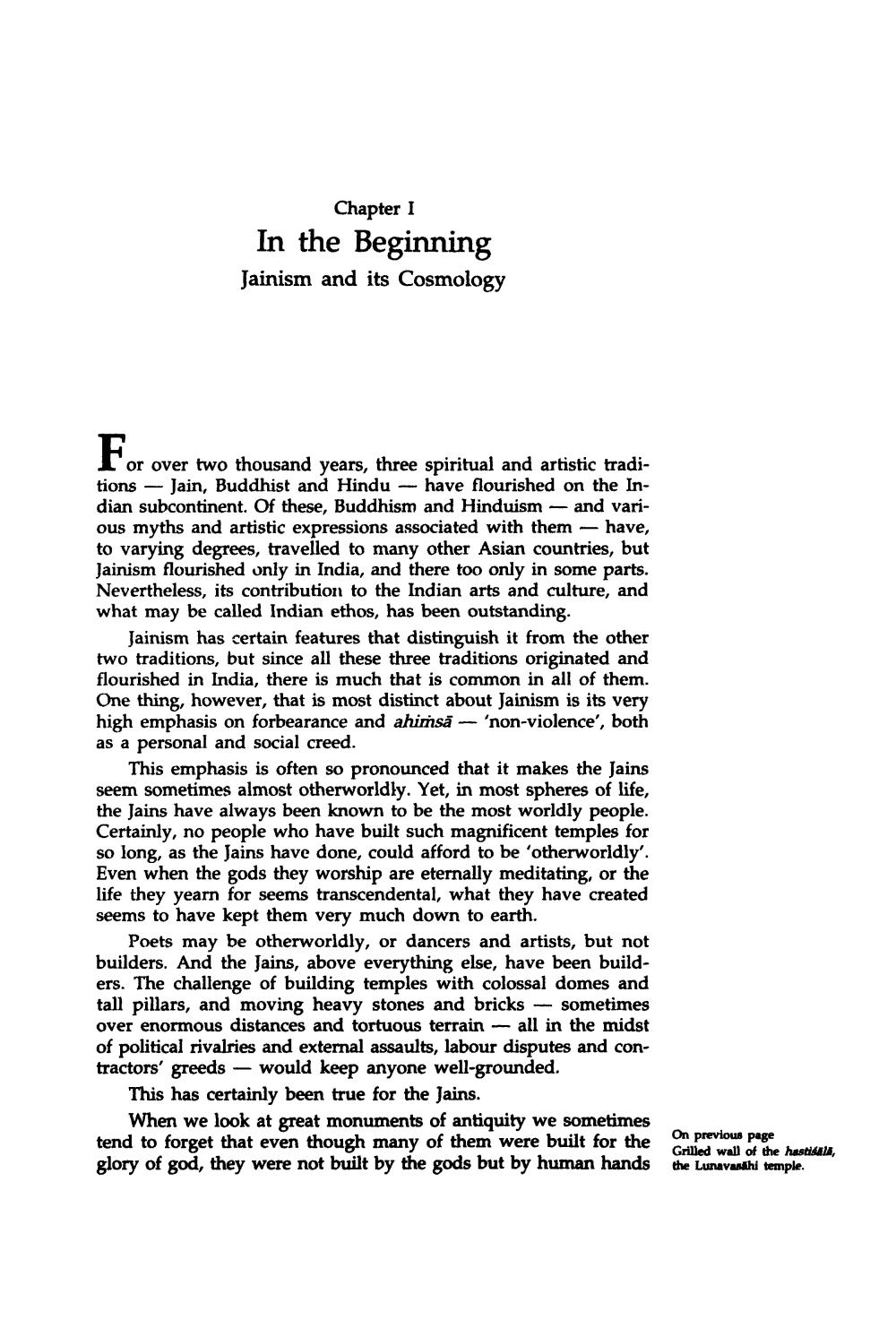________________
Chapter 1 In the Beginning Jainism and its Cosmology
I or over two thousand years, three spiritual and artistic traditions - Jain, Buddhist and Hindu - have flourished on the Indian subcontinent. Of these, Buddhism and Hinduism – and various myths and artistic expressions associated with them — have, to varying degrees, travelled to many other Asian countries, but Jainism flourished only in India, and there too only in some parts. Nevertheless, its contribution to the Indian arts and culture, and what may be called Indian ethos, has been outstanding.
Jainism has certain features that distinguish it from the other two traditions, but since all these three traditions originated and flourished in India, there is much that is common in all of them. One thing, however, that is most distinct about Jainism is its very high emphasis on forbearance and ahiṁsā - 'non-violence', both as a personal and social creed.
This emphasis is often so pronounced that it makes the Jains seem sometimes almost otherworldly. Yet, in most spheres of life, the Jains have always been known to be the most worldly people. Certainly, no people who have built such magnificent temples for so long, as the Jains have done, could afford to be 'otherworldly'. Even when the gods they worship are eternally meditating, or the life they yearn for seems transcendental, what they have created seems to have kept them very much down to earth.
Poets may be otherworldly, or dancers and artists, but not builders. And the Jains, above everything else, have been builders. The challenge of building temples with colossal domes and tall pillars, and moving heavy stones and bricks - sometimes over enormous distances and tortuous terrain - all in the midst of political rivalries and external assaults, labour disputes and contractors' greeds – would keep anyone well-grounded.
This has certainly been true for the Jains.
When we look at great monuments of antiquity we sometimes tend to forget that even though many of them were built for the
On previous page
Grilled wall of the hastidala, glory of god, they were not built by the gods but by human hands the Lunavaadhi temple.




